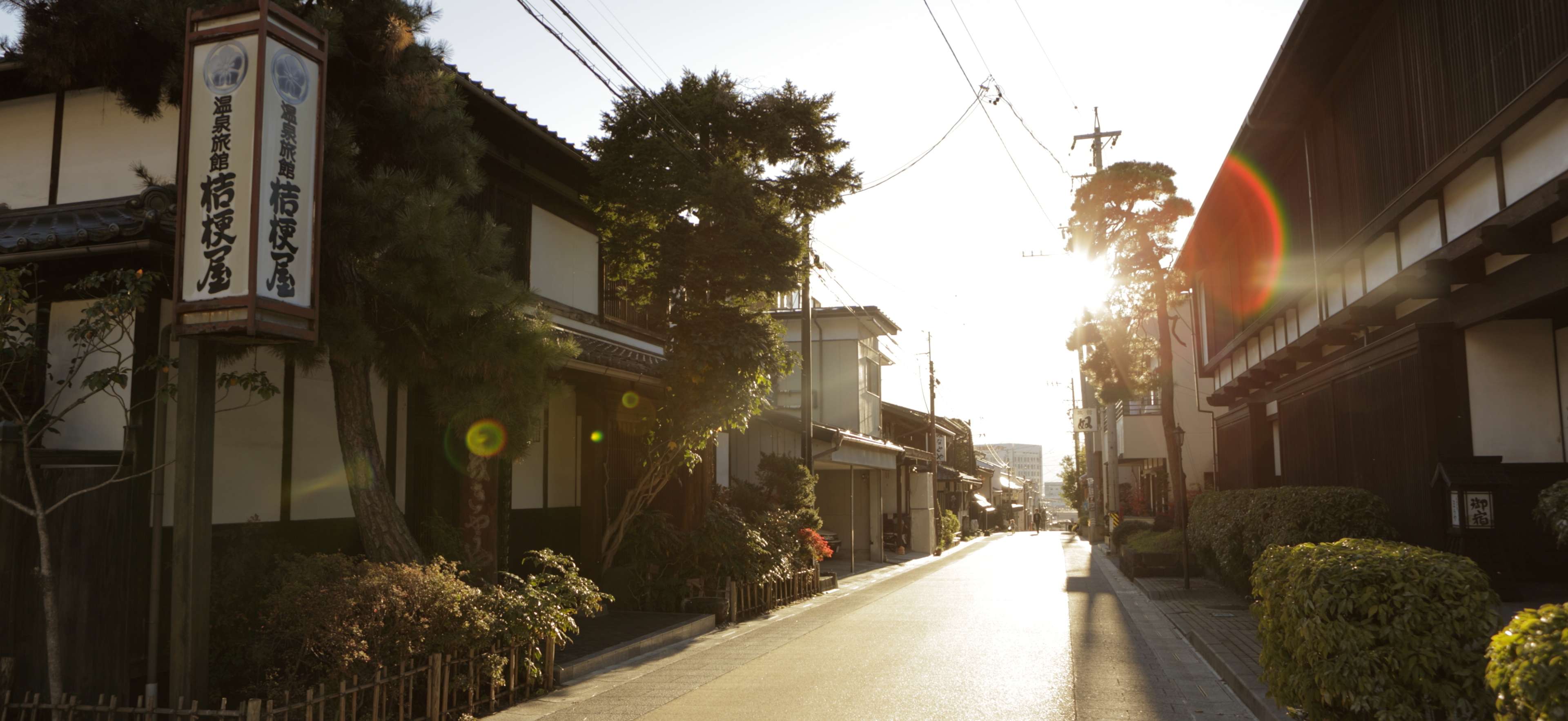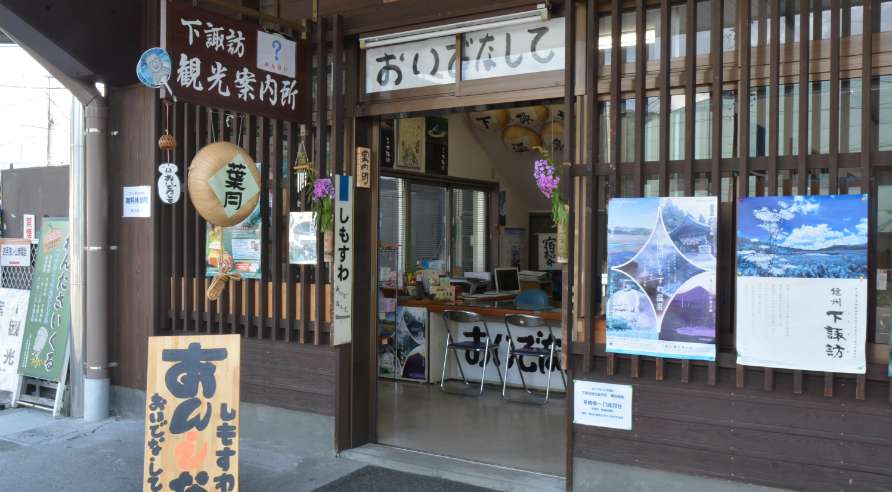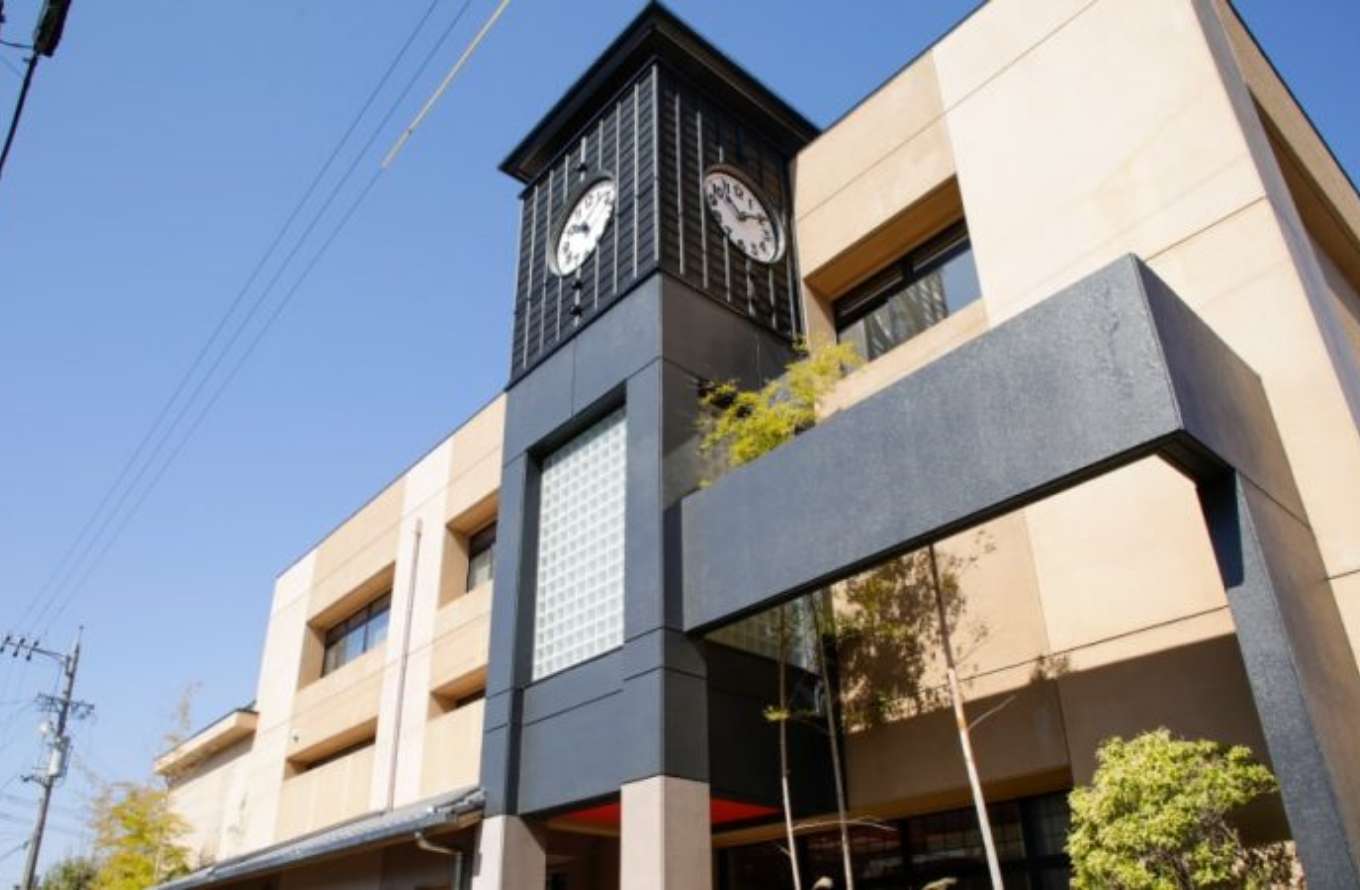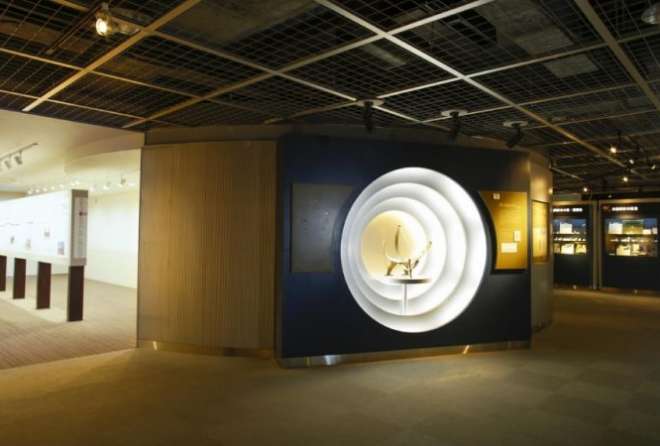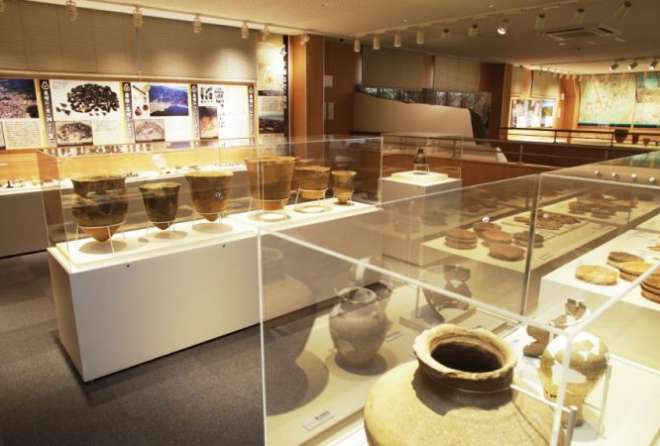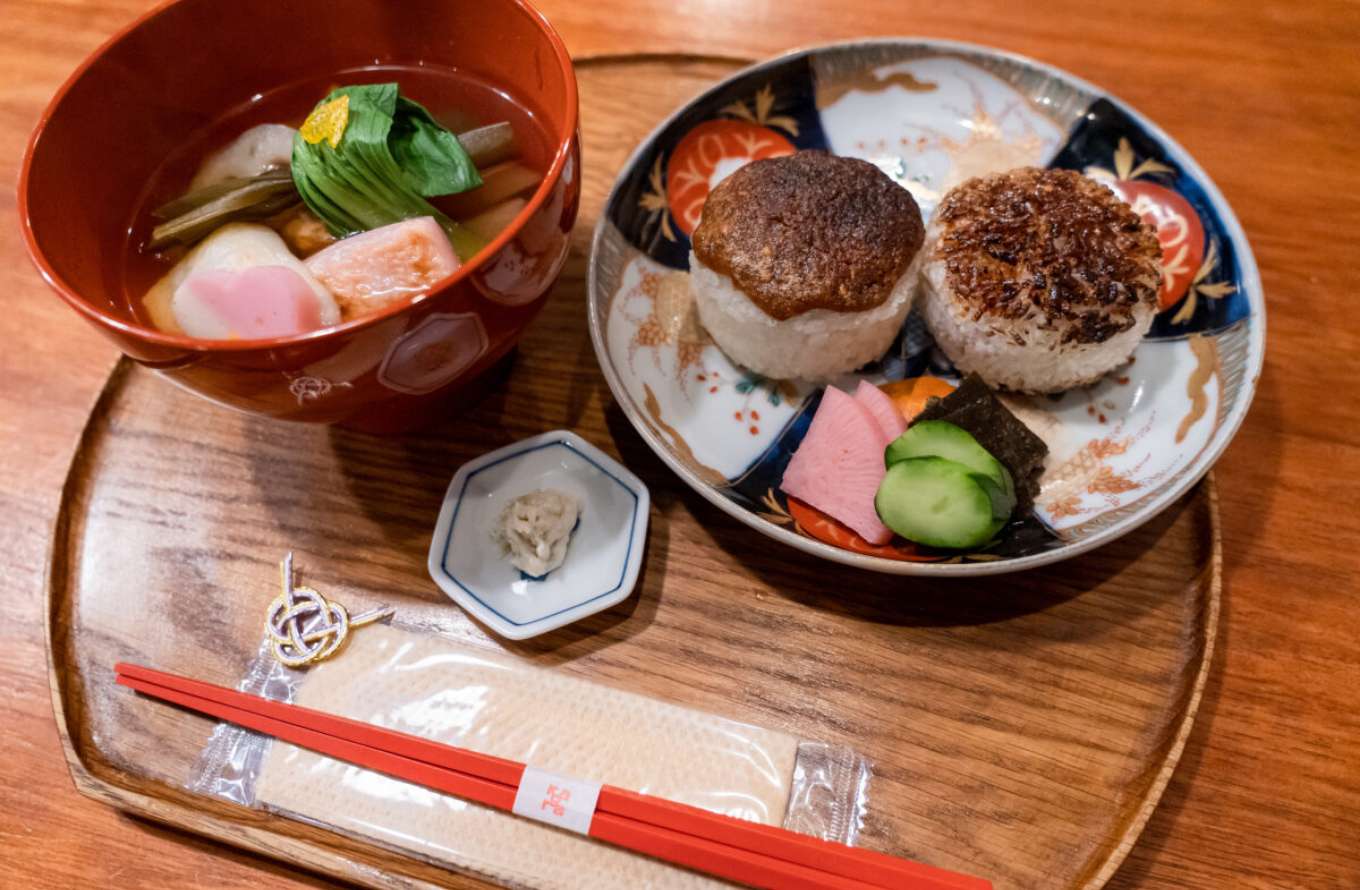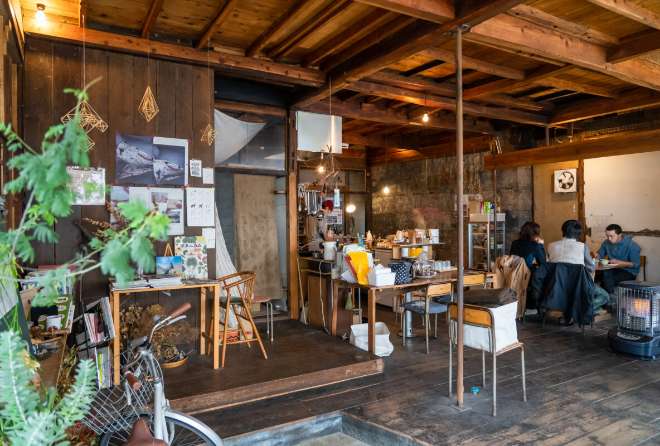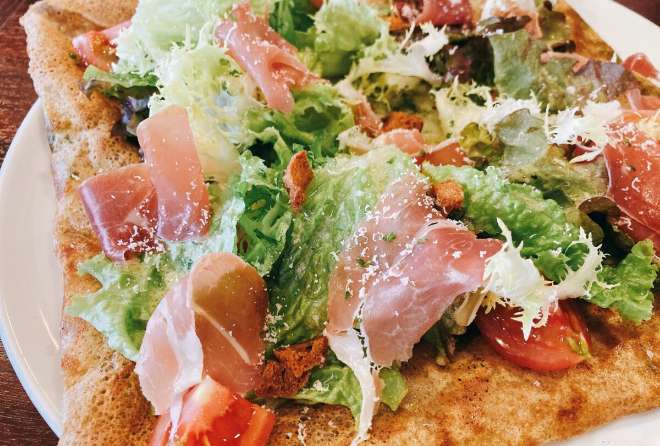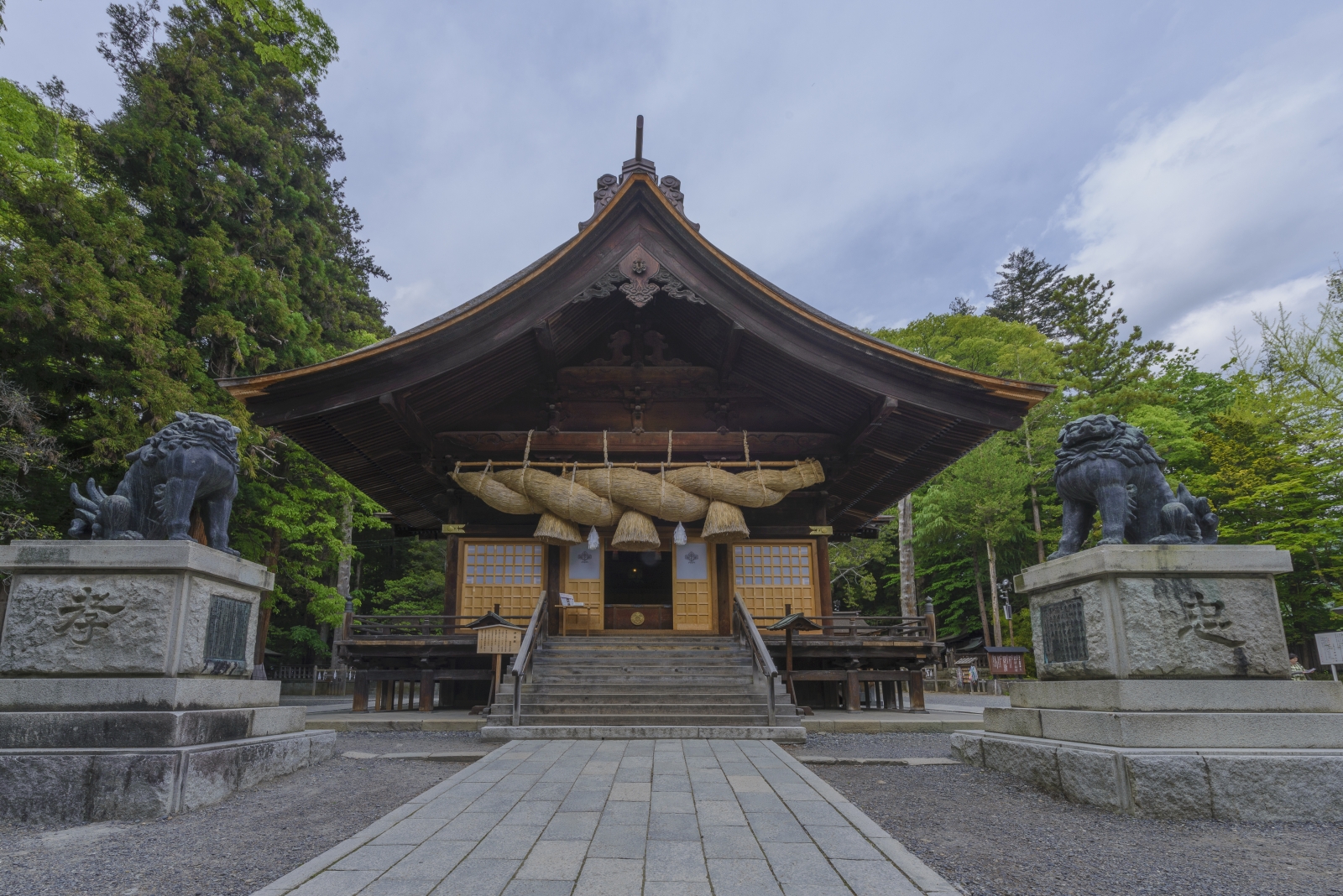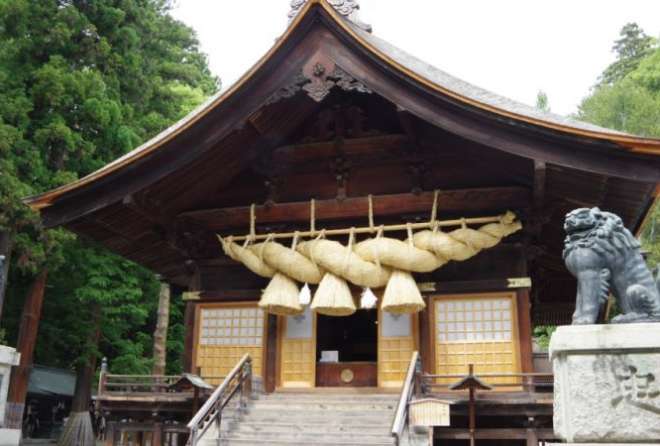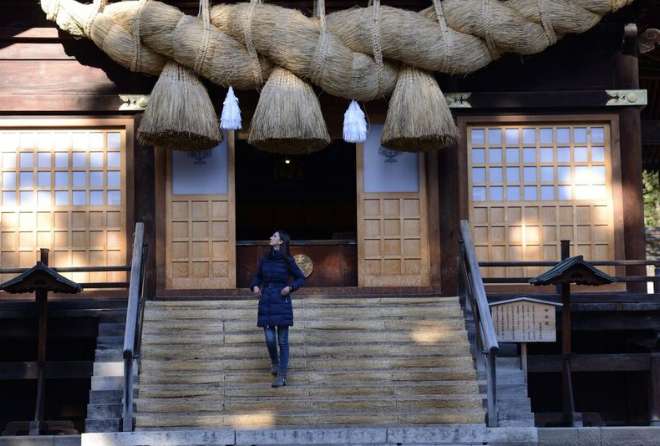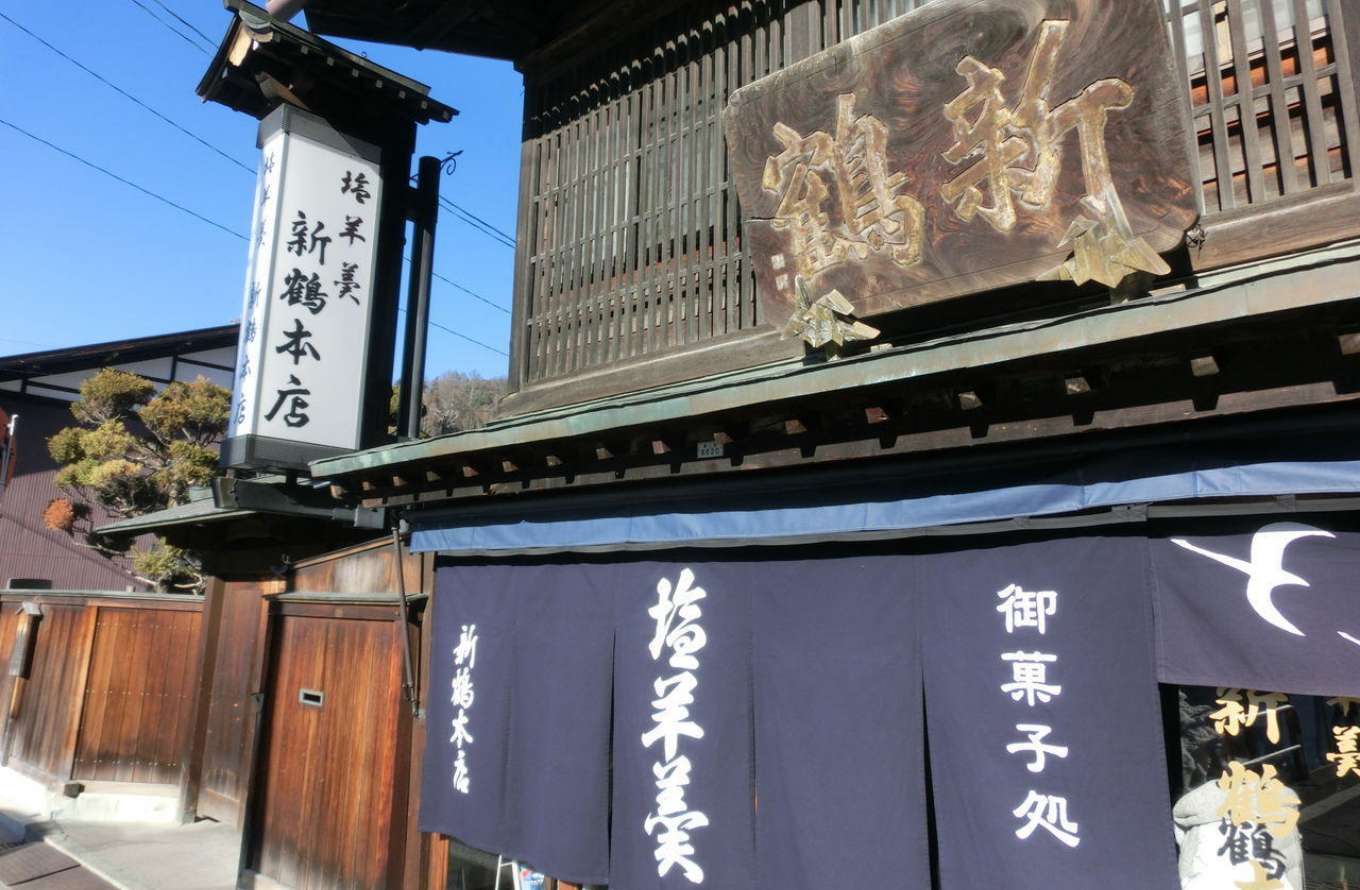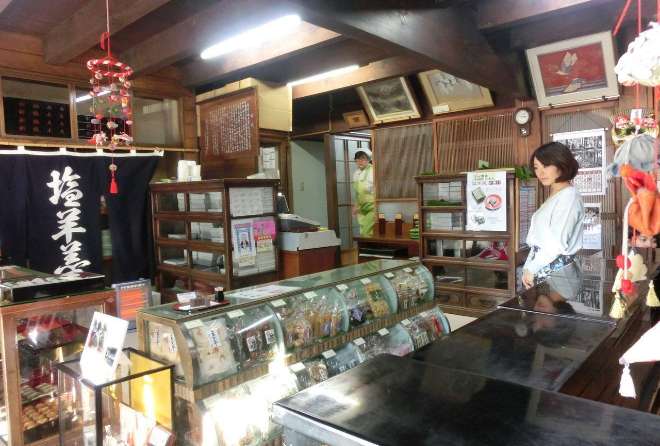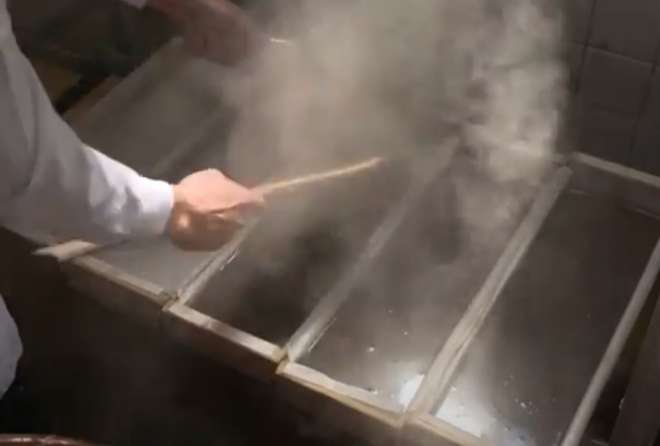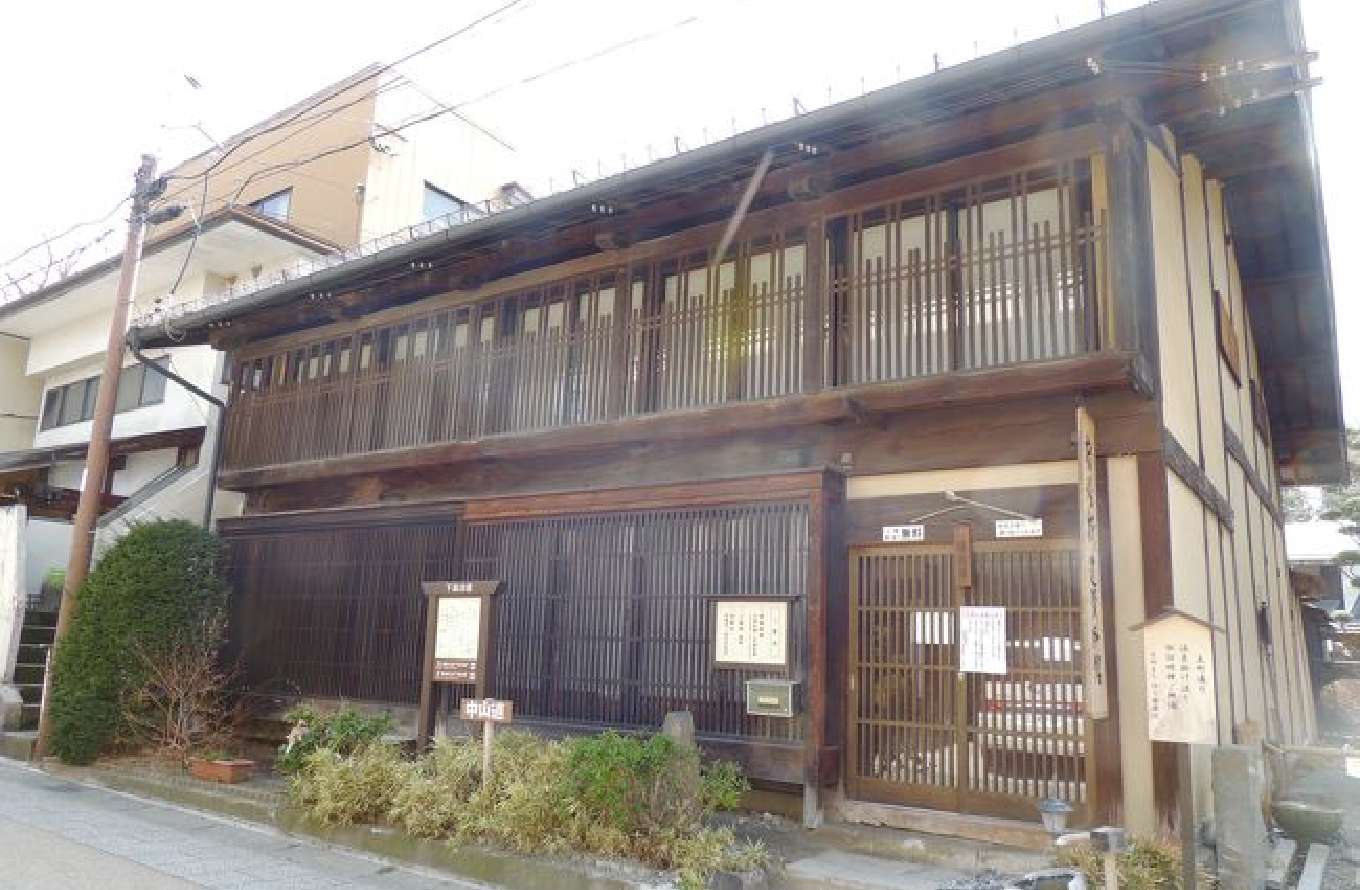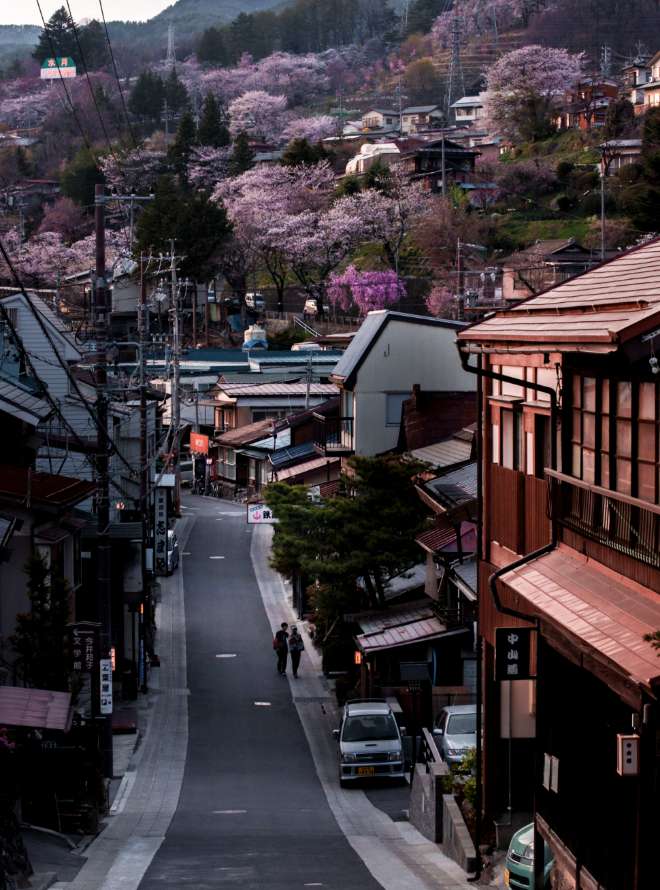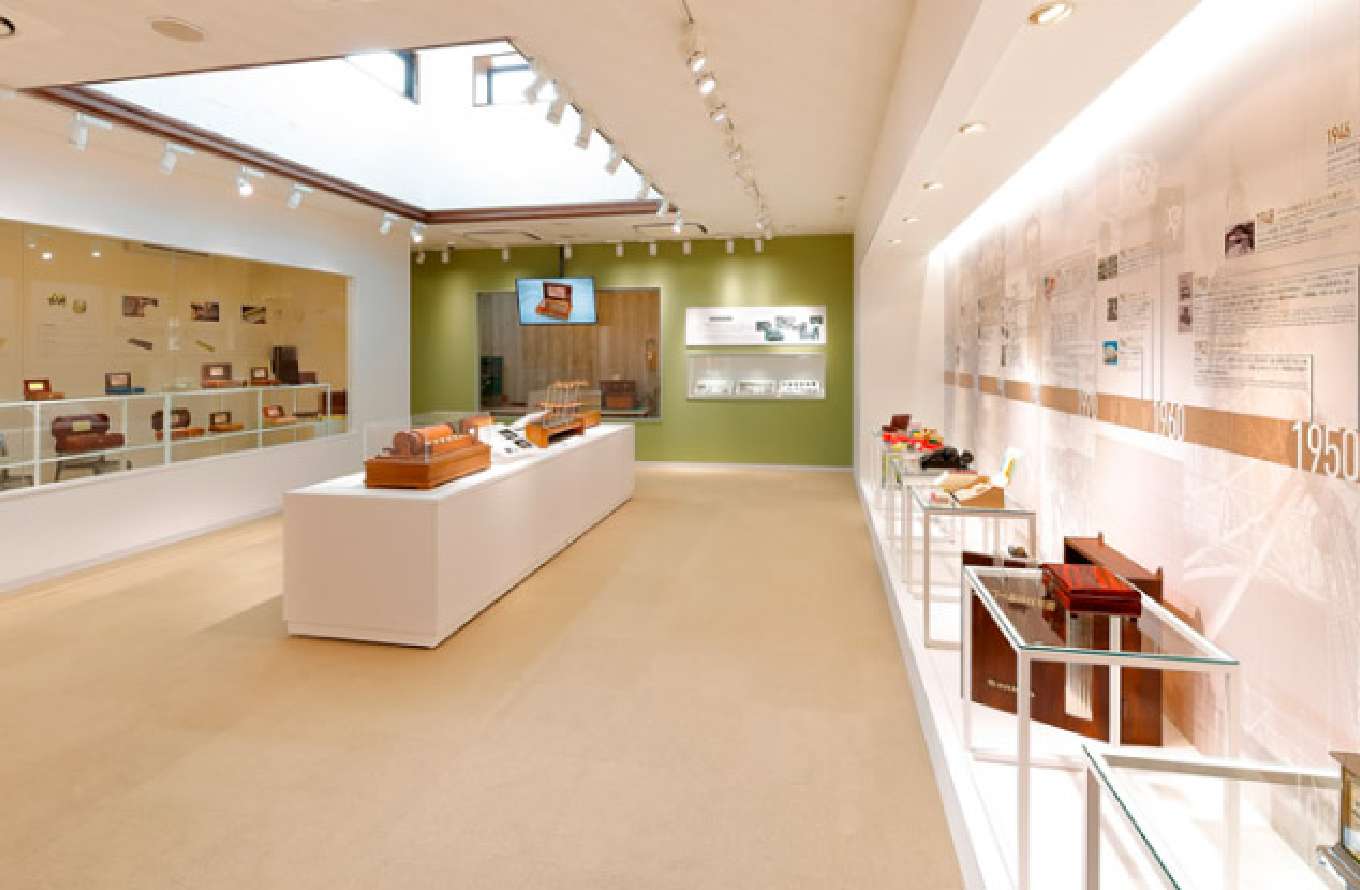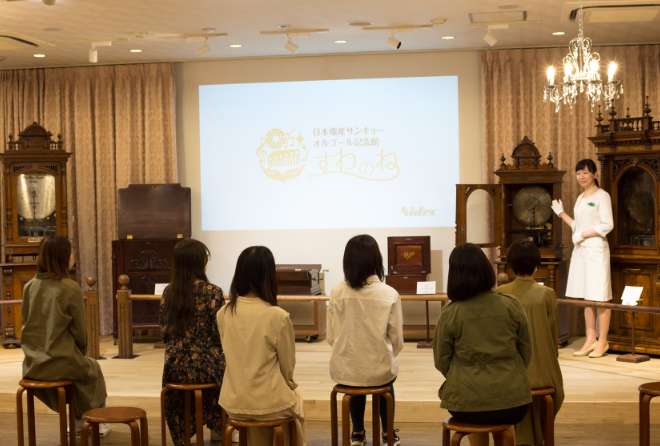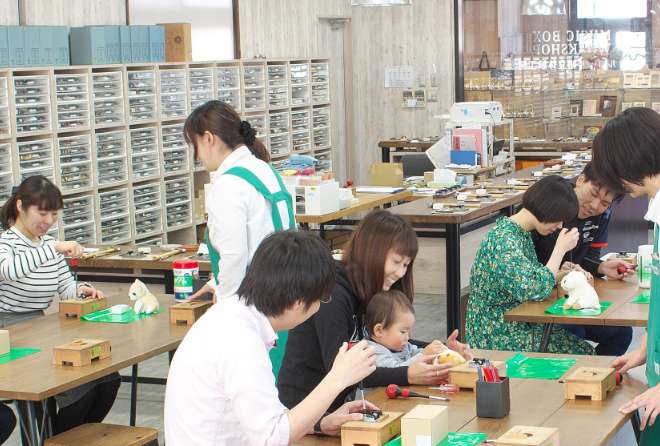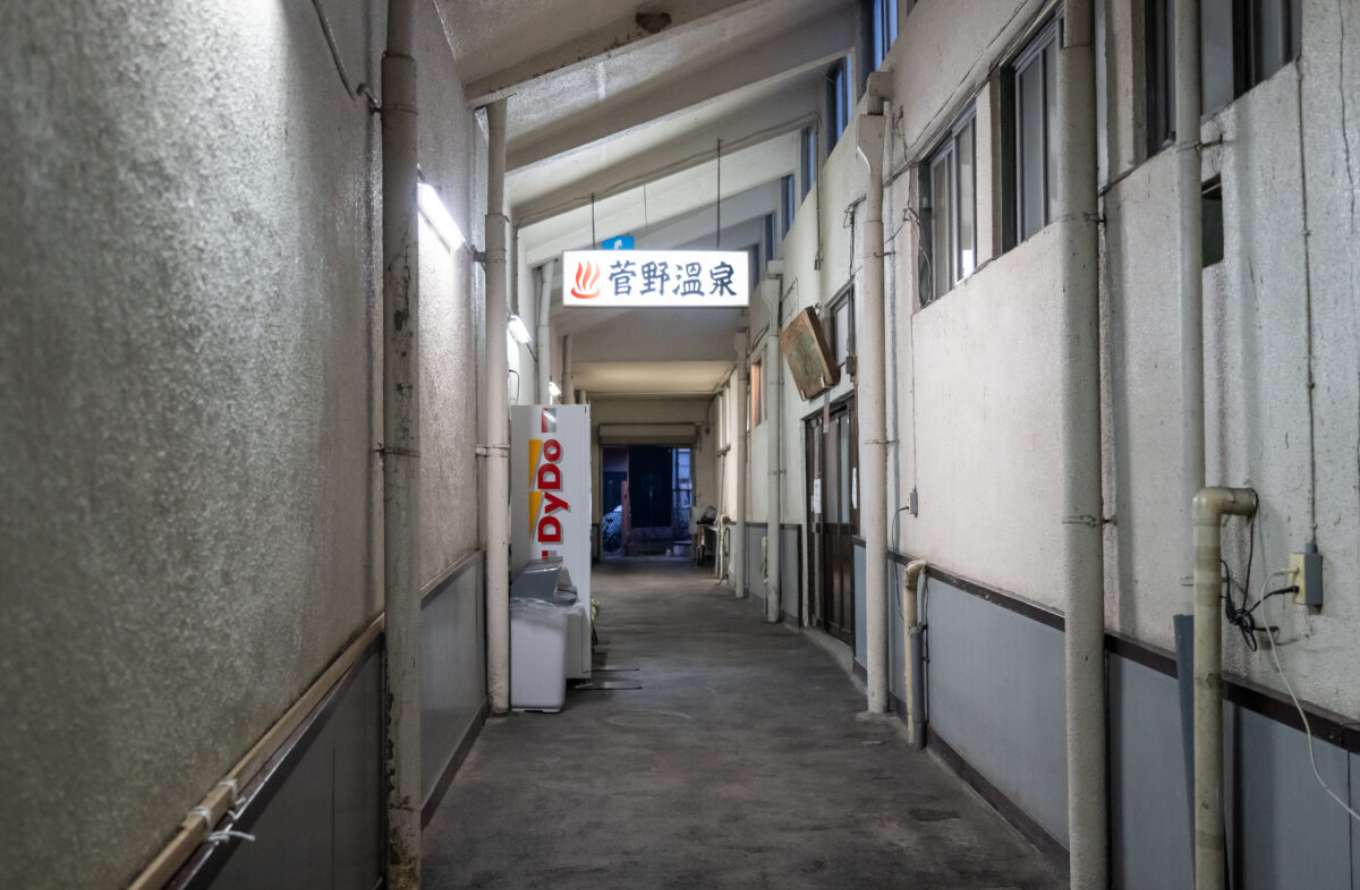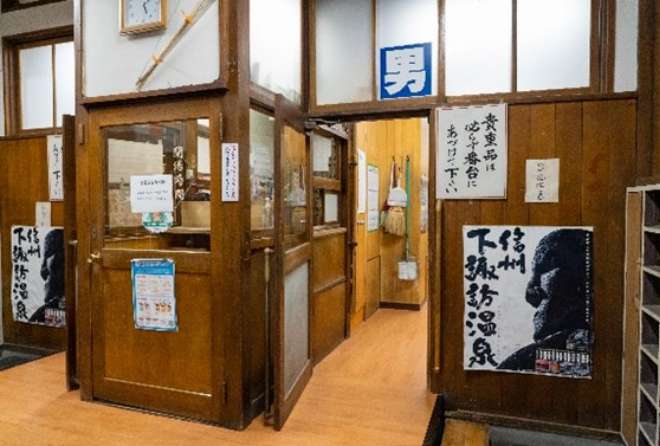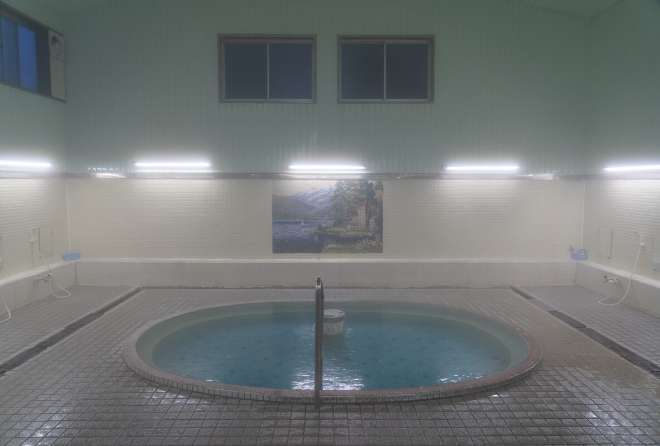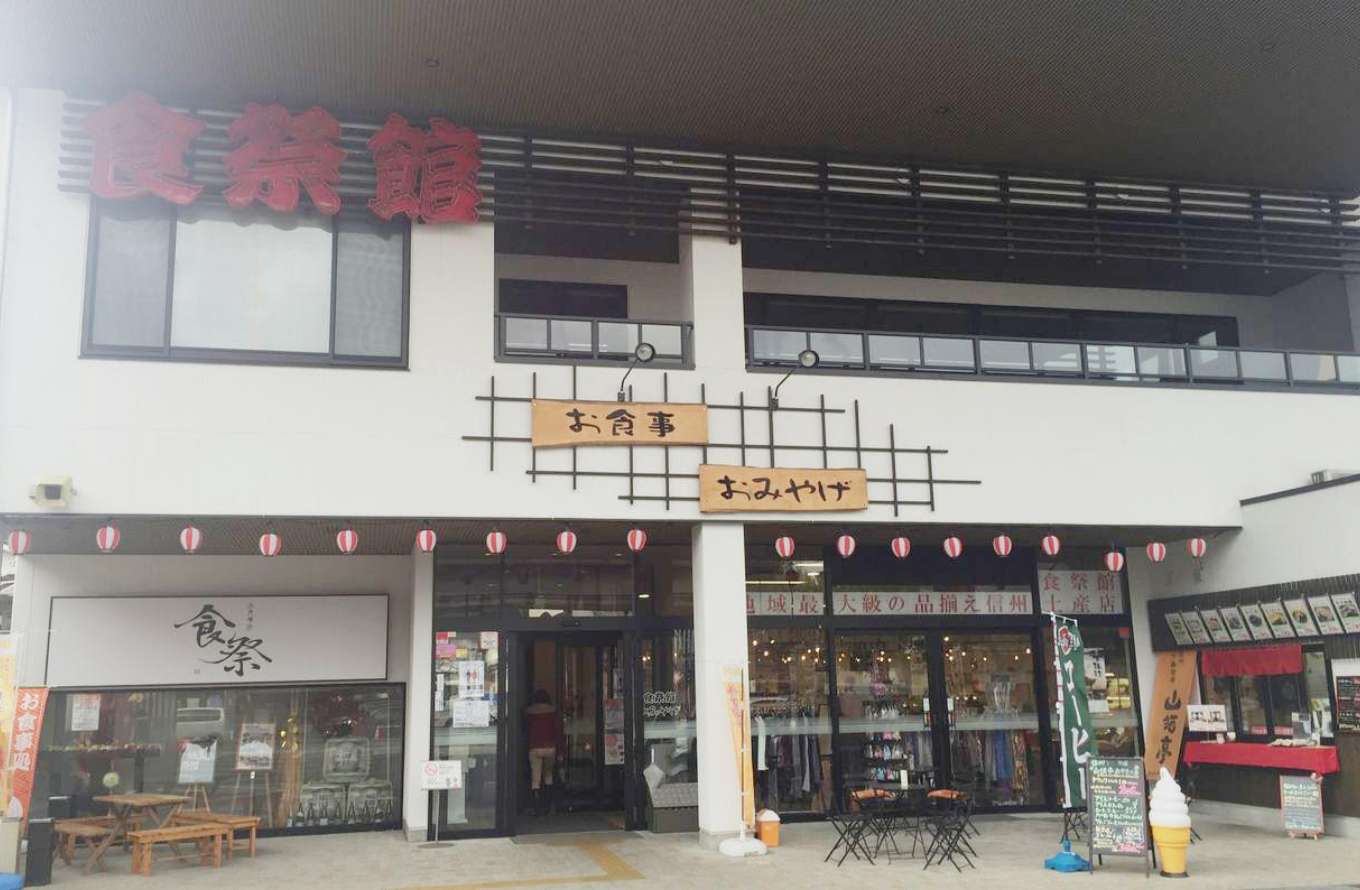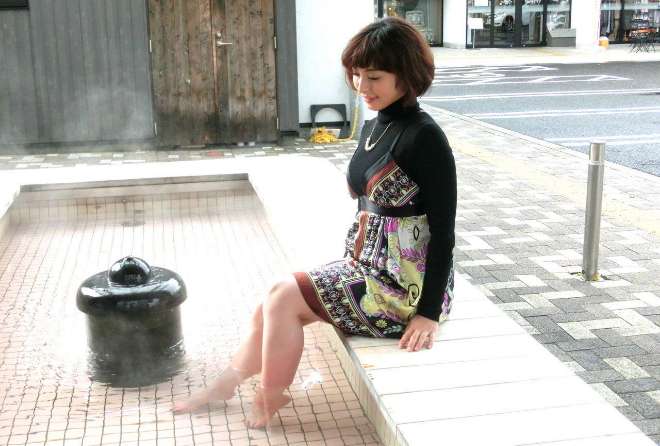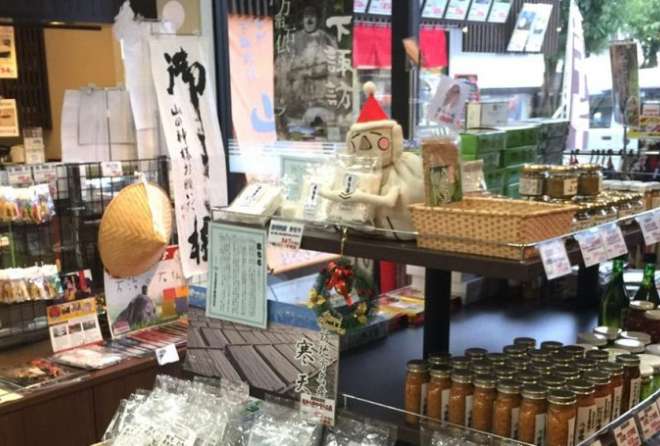The Suwa Taisha Shimosha Akimiya Shrine is located right at the crossroads of the ancient Nakasendo and Koshu Kaido highways. It is situated close to the center of Shimosuwa, the only post town on the Nakasendo highway boasting a natural hot spring, so you will even find hot spring waters flowing at the hand washing stand, used for spiritual purification before worship, on the grounds of the shrine. The impressive carvings found in the main hall of the shrine are the work of Tatekawa Washiro Tomimune, a master carver from the mid Edo period, including the work Crane on Bamboo, which is considered to be his greatest masterpiece.
Facing the main hall, you will find at the left side the Koyasusha shrine, where Koshinonuna Kawa-Hime no Kami is enshrined, a Shinto goddess deeply connected to the lives of women as the goddess of fertility, safe childbirth, and child-raising. The Koyasusha shrine has been popular for a long time. The shrine features many other highlights worth a visit, such as the three-way gabled Kagura hall adorned with a large Shimenawa straw rope, the Neiri-no-sugi Japanese cyprus tree dated at approximately 800 years old, and a bronze Komainu guardian dog statue said to be the largest of its class in Japan. Both the main hall and the Kagura hall are designated as important cultural properties by the national government.
